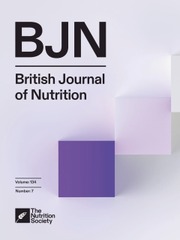No CrossRef data available.
Article contents
Coverage of vitamin A supplementation among under-five children in India and its relationship with childhood mortality: insights from multiple rounds of a nationally representative survey from 2005–2006 to 2019–2021
Published online by Cambridge University Press: 22 July 2025
Abstract
We investigated the coverage of childhood vitamin A supplementation (VAS) across India from 2005–2006 to 2019–2021 and further explored how it related to childhood mortality. Data collected from mothers through standard questionnaires during the latest three rounds of the National Family Health Survey (2005–2006, 2015–2016 and 2019–2021) were used. Information on VAS in children aged 9–35 months was available from 2015–2016 to 2019–2021. Information on VAS among children aged 9–59 months was available from 2005–2006 to 2015–2016. Childhood VAS coverage was determined nationally and subnationally (viz. individual states, geography, socio-demographic index and developmental groups). Nearly 40 % eligible children aged 9–59 months and 30 % eligible children aged 9–35 months missed VAS during recent times. But improvements in VAS coverage were noticed over the years: from 18·6 % (2005–2006) to 60·5 % (2015–2016) among children aged 9–59 months and from 64·5 % (2015–2016) to 71·2 % (2019–2021) among children aged 9–35 months. There were coverage disparities, with Western India documenting the highest and Northeastern India documenting the lowest coverage values. During simple linear regression analysis, childhood mortality between 1 and 5 years of age varied inversely as a function of VAS coverage among children aged 9–59 months, with the association being less pronounced in 2015–2016 (β = −0·47) than in 2005–2006 (β = −0·40). However, this relationship disappeared when we accounted for potential confounders (viz. childhood immunisation and socio-economic factors) through multivariate analysis, suggesting that the role of VAS in promoting childhood survival may be limited during present times.
Information
- Type
- Research Article
- Information
- Copyright
- © The Author(s), 2025. Published by Cambridge University Press on behalf of The Nutrition Society


